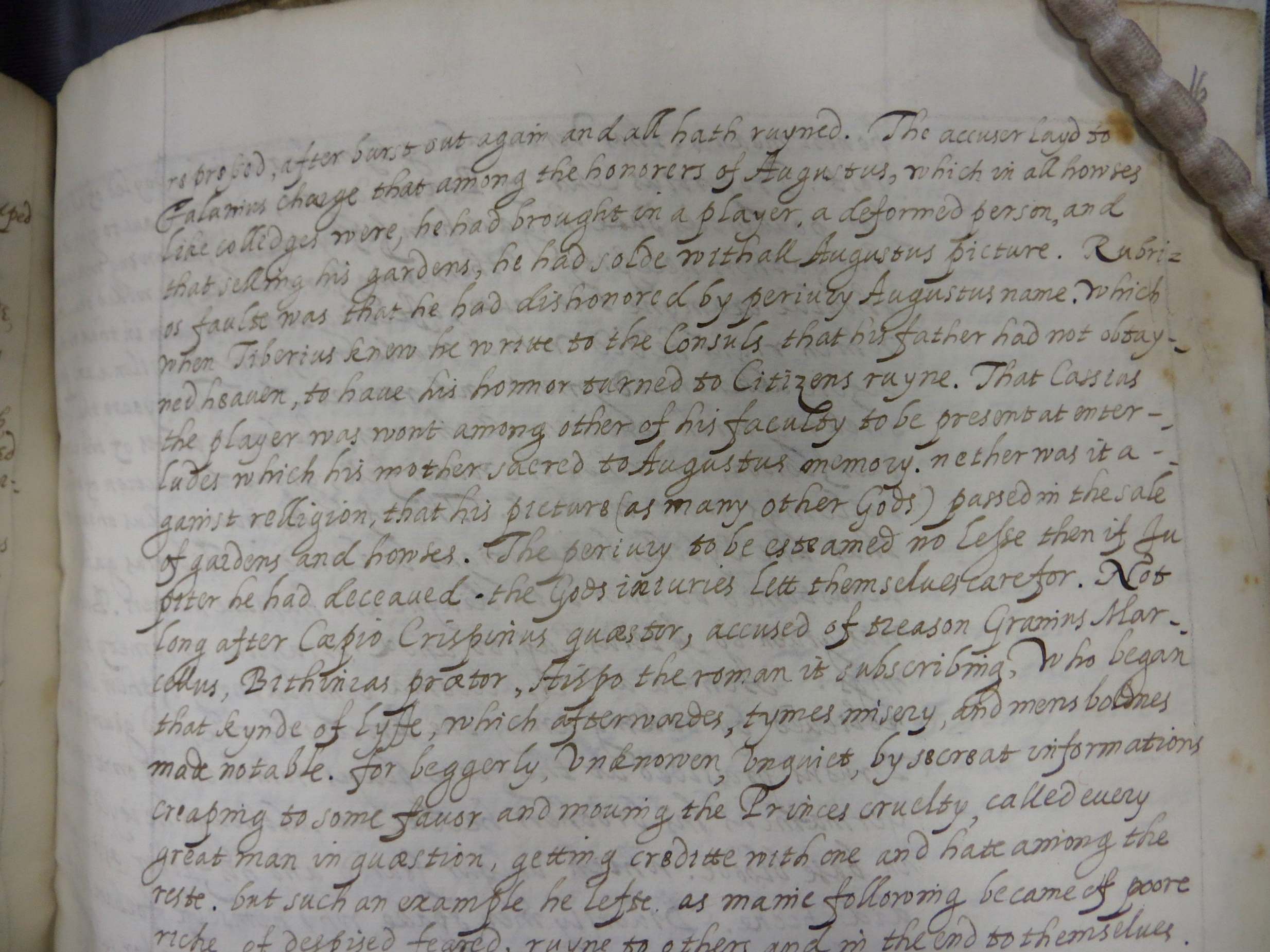Queen Elizabeth I was behind 16th-century translation of ancient Roman manuscript, handwriting analysis suggests
‘The higher you are in the social hierarchy of Tudor England, the messier you can let your handwriting become. For the queen, comprehension is somebody else’s problem,’ say experts

Your support helps us to tell the story
From reproductive rights to climate change to Big Tech, The Independent is on the ground when the story is developing. Whether it's investigating the financials of Elon Musk's pro-Trump PAC or producing our latest documentary, 'The A Word', which shines a light on the American women fighting for reproductive rights, we know how important it is to parse out the facts from the messaging.
At such a critical moment in US history, we need reporters on the ground. Your donation allows us to keep sending journalists to speak to both sides of the story.
The Independent is trusted by Americans across the entire political spectrum. And unlike many other quality news outlets, we choose not to lock Americans out of our reporting and analysis with paywalls. We believe quality journalism should be available to everyone, paid for by those who can afford it.
Your support makes all the difference.Queen Elizabeth I is the author of a 400-year-old translation of an ancient Roman history text, experts believe.
Researchers analysed the handwriting of the document’s author as well as the paper they used to investigate the translation of Tacitus’ Annales.
Tell-tale clues, including the top stroke of the writer’s ‘e’, their extreme horizontal ‘m’ and broken ‘d’ stem, swung the evidence in favour of the virgin queen having written the manuscript in the 16th century, they found. Elizabeth was a known European languages specialist, experts said.
The paper also had watermarks featuring a rampant lion next to the initials ‘G.B.’, with a crossbow countermark. Experts at the University of East Anglia said such devices were particularly popular among the Elizabethan secretariat in the 1590s.
Those symbols have been found on Elizabeth’s other writings ranging from translated documents and personal letters, the experts said.
The monarch’s Annales translation focuses on its first book, which sees the death of Augustus and the rise of the emperor Tiberius, and is based on original works by Roman historian and senator Tacitus.
Another giveaway is the tone and style of the translated writing, which experts, writing in the Review of English Studies journal, say match the last Tudor monarch’s known works.
Researchers from the University of East Anglia say the discovery could have important implications on our understanding of the political and cultural nature of the Elizabethan court.
“The corrections made to the translation are a match for Elizabeth’s late hand, which was, to put it mildly, idiosyncratic,” said Dr John-Mark Philo.
“The higher you are in the social hierarchy of Tudor England, the messier you can let your handwriting become. For the queen, comprehension is somebody else’s problem.
“We already knew she’s great with languages – Latin, French, Italian. She’s familiar with Spanish and Greek – she actually starts using some of the Greek alphabet in her own handwriting.”
Additional reporting by Press Association
Join our commenting forum
Join thought-provoking conversations, follow other Independent readers and see their replies
Comments